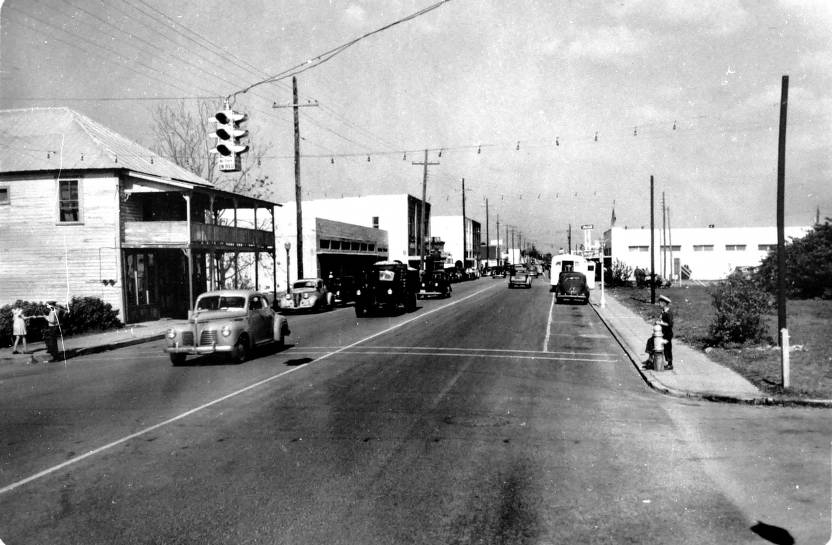The City of Palmetto – PAST TO PRESENT

BY SARAH FISH
Just north of Bradenton across the Manatee River is sister-city, Palmetto, a part of greater Manatee County. Though just about four small miles of incorporated city limits, Palmetto played a large part in the county’s history and contributed significantly to its growth at the turn of the century.
According to the City of Palmetto website, the “Father of Palmetto” is Samuel Sparks Lamb, who migrated to Florida from Clark County, Mississippi, in 1866 with his wife Sarah and seven children. Over the course of two years, the Lamb family slowly made their way down to the Gulf Coast before stopping to look for land to settle
along the Manatee River.
“A barouche pulled by a mule and a horse and driven by nine-year-old son, Julius “Dool,” transported Sarah and five daughters, Mary Emma, Ellen, Sarah, Margaret and Julia Elizabeth. A yoke of oxen pulled a wagon loaded with household goods. Lamb rode his horse,” writes Joe Warner in his book, The Singing River: A History of People, Places and Events Along the Manatee River.
In February 1868, Lamb purchased a single homestead close to Gamble Creek. Though within just a few years, Lamb acquired more acreage, platted it out and named it Palmetto after his birth-state, South Carolina, otherwise known as the “Palmetto State,” the City of Palmetto website says.
Lamb had a vision for a thriving community and immediately established Palmetto’s first post office in the same year he and his family arrived. Soon after in 1871, he established a general store and in 1880, a freestanding post office was built. According to MyManatee.org, in 1889 he was one of the founding stockholders of the Peoples Wharf and Shipping Company, with plans of building and owning docks along the river for shipping and receiving produce and other goods. By 1893,
Palmetto would officially be incorporated as a village, and by 1897 it finally became the City of Palmetto.
“Over the years, he would donate land out of this original plat for a cemetery, three churches, a public library, the Woman’s Club, and a park,” the City of Palmetto website says. “It was also due to his foresight and planning that Old Main Street is so wide. Lamb intended to have a fine avenue stretching all the way between the two entrances to Palmetto, the wharf on the river, and the Seaboard Air Line Depot.”
In 1902, the arrival of the railroad moved Palmetto’s center of commerce from the docks along the river to the Seaboard Air Line train station. This railway connected communities from Raleigh, North Carolina, to Miami and contributed to a boom in Palmetto’s growth.
In 1914, Palmetto received $10,000 in funds from the Andrew Carnegie Foundation to build one of the first libraries in Southern Florida. The only stipulation by the
foundation was that the library must have a basement. Therefore the library’s main entrance leads to the second floor via stairs and the first floor is considered
the building’s basement, according to the Palmetto Historical Park website.
Today, the history of Palmetto can still be observed at the Palmetto Historical Park. Along with the city’s original one-room schoolhouse, visitors can admire the Carnegie Library, the focal point and archives to the park. The original 1880
post office is also part of the historical park, where once a year in March on Heritage Day, citizens can have a letter hand canceled with a special stamp used only on that day and at that location.
An original cottage from 1900 also stands on the park’s property and preserves the way life was at the turn of the century. It is a typical bungalow-style home for which Old Florida is known. And just nearby is the latest addition to the park, the Cypress House Military Museum, a 1930s bungalow relocated from Longboat Key, that displays how WWII military personnel were housed. The only unoriginal structure at the park is the chapel, built in 1999 and modeled to size and style after the first Baptist, Methodist, and Presbyterian churches in Palmetto.
Amanda Ward, Palmetto Historical Park’s Education & Engagement Coordinator,
encourages people to take advantage of the free guided tours that happen at 2 p.m. each day the park is open. “Palmetto Historical Park is a great place to learn about our small-town history,” Ward said.
The Carnegie Library is accessible during regular open hours, however a guided tour is necessary to see the other historical buildings. The park grounds are open to the public for viewing without a guide every day. For more information about the locations on the tour or for more historical information on Palmetto, call 941-723-4991 or email palmettohistoricalpark@manateeclerk.com.







Photos: Courtesy of Manatee County
Public Library Historical Digital Collections.
